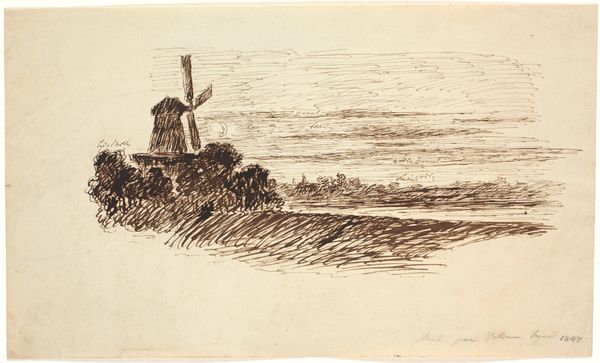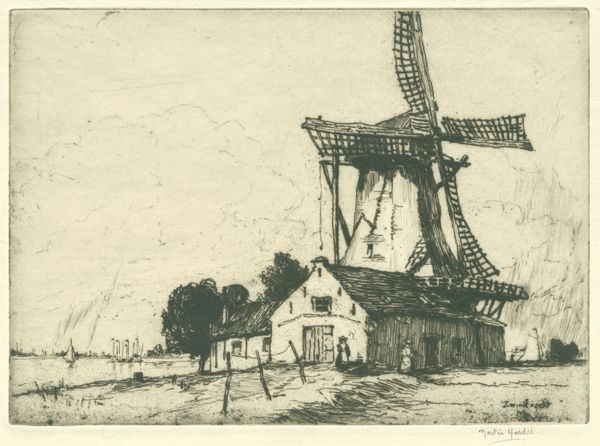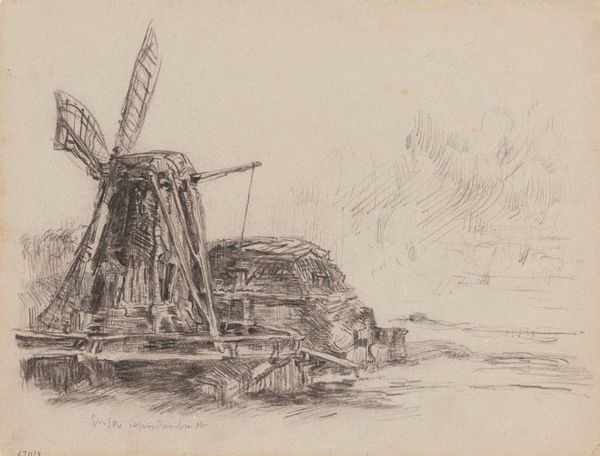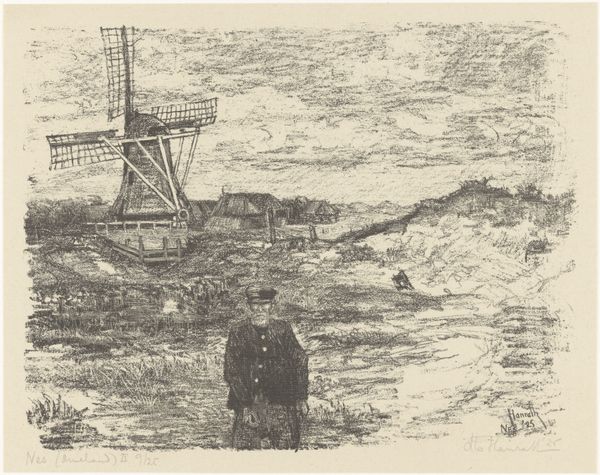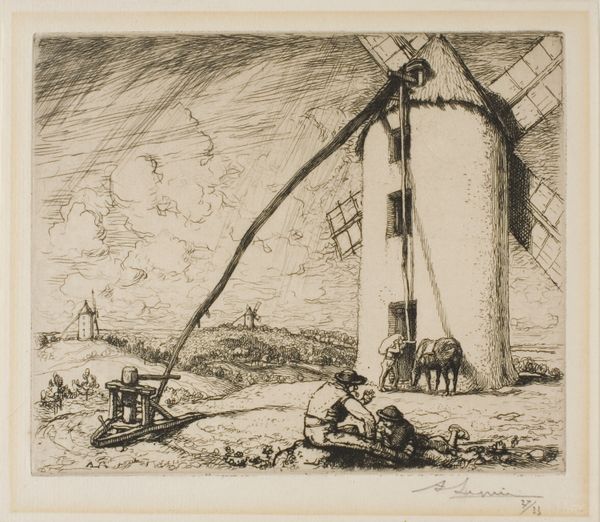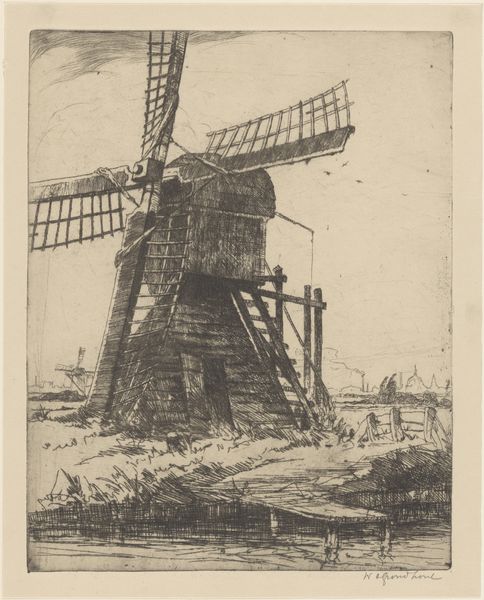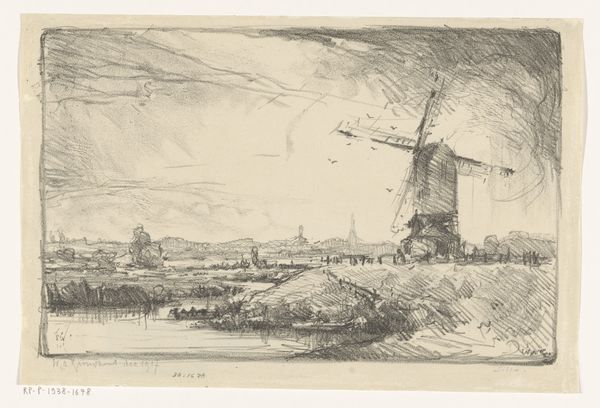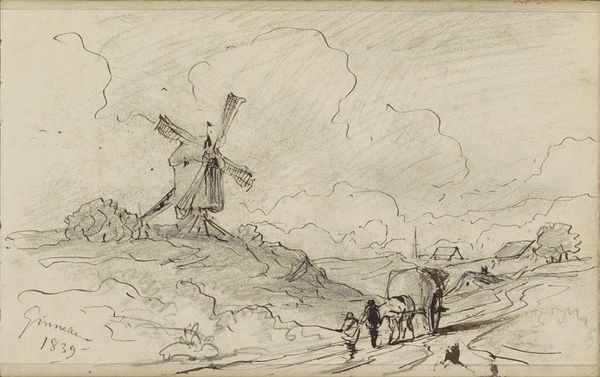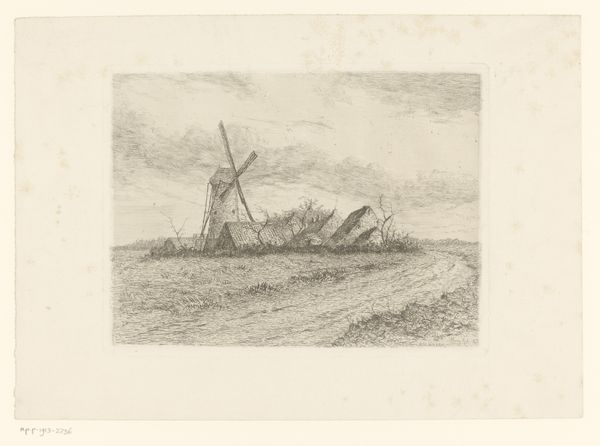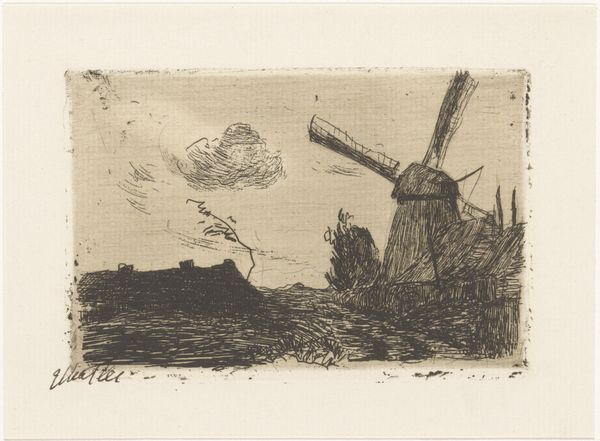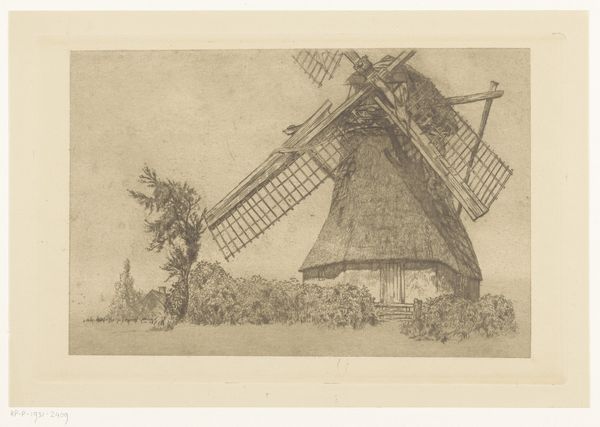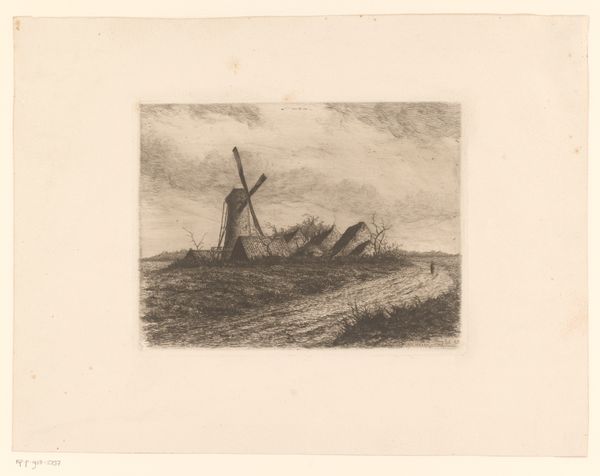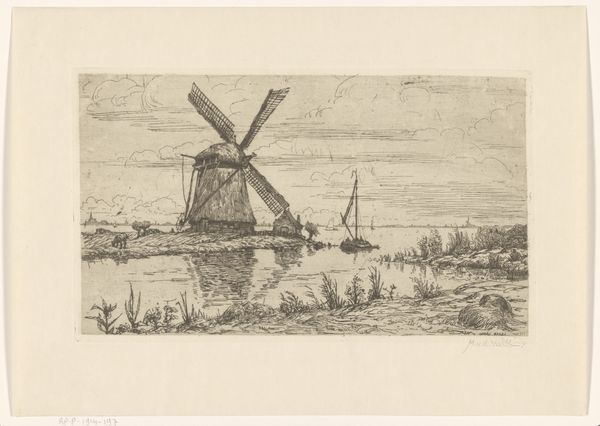
print, etching
#
the-ancients
# print
#
impressionism
#
etching
#
landscape
Copyright: National Gallery of Art: CC0 1.0
Norbert Goeneutte created this etching, The Mill at Saint-Jacut. The dominant symbol here, of course, is the windmill, a structure deeply intertwined with notions of labor, transformation, and even the passage of time. Historically, windmills have been symbols of human ingenuity. They harness the power of the wind, converting it into energy to grind grain, and pump water. This image evokes something more profound. Consider Don Quixote tilting at windmills – a tale of romantic idealism clashing with reality. In medieval art, the motif of the wheel, akin to the windmill’s turning sails, often symbolized fortune, both its rise and its inevitable fall. We see similar circular motifs in mandalas, which appear across cultures from Tibet to the Americas, and also in the rose windows of Gothic cathedrals, each suggesting a cyclical, repetitive, and sometimes fateful pattern. The windmill is charged with a sense of melancholy, its turning blades almost like a lament. It reminds us that everything changes, yet some forms endure, carrying echoes of the past into the present.
Comments
No comments
Be the first to comment and join the conversation on the ultimate creative platform.
